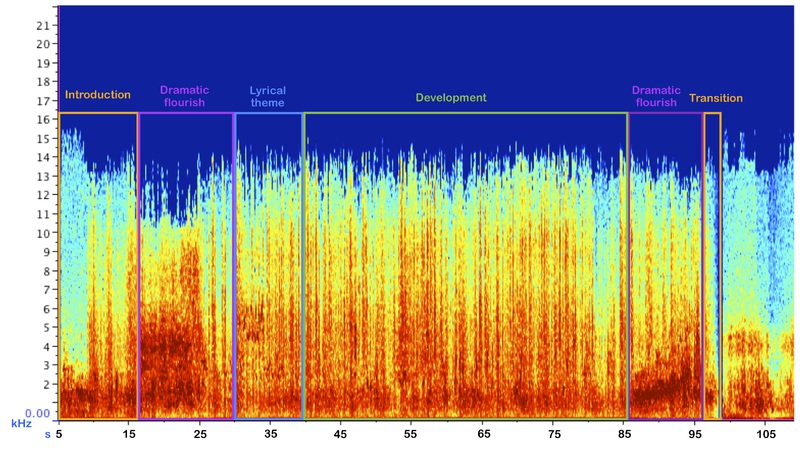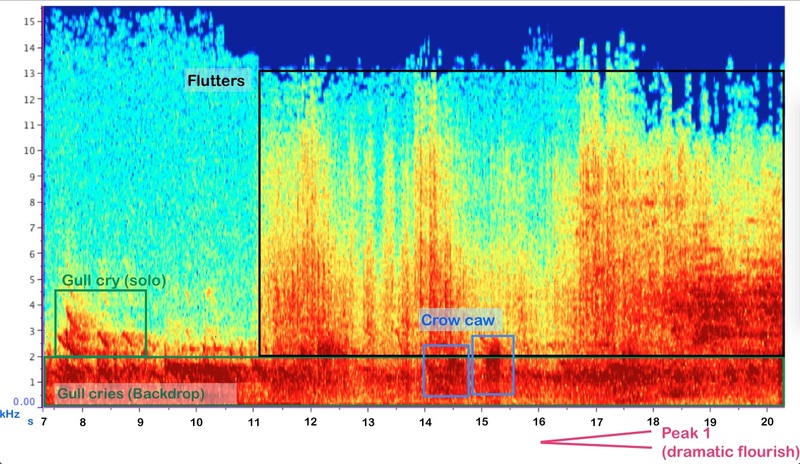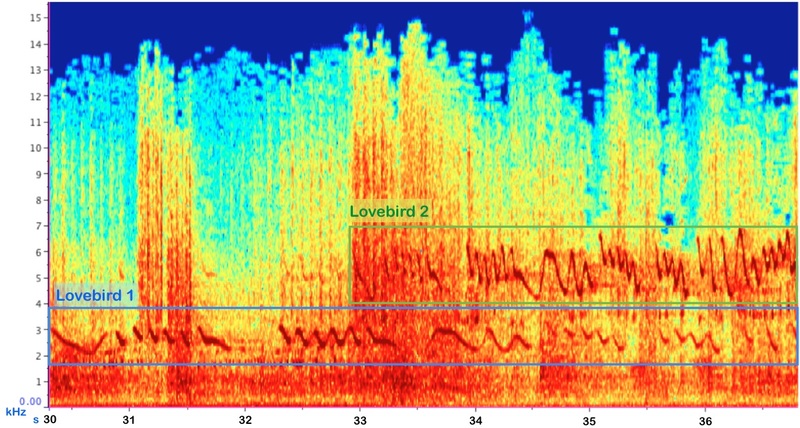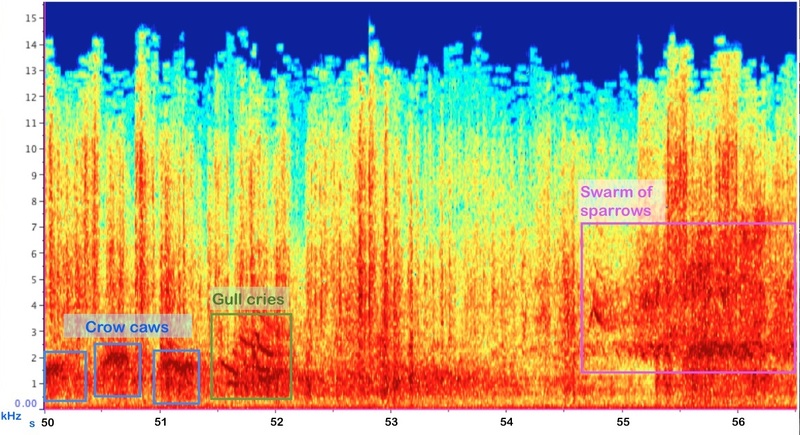An Overture of Bird Noises
In his comment, Truffaut draws attention to two particularly interesting aspects of the film’s soundtrack. Firstly, The Birds has no conventional film music in the traditional sense of an orchestral score. This omission comes as a surprise, considering that Bernard Herrmann composed the highly effective and iconic scores of Hitchcock’s Psycho (1960) and Vertigo (1958) prior to The Birds. Secondly, given Sala’s classical training in music and the Mixturtrautonium’s musical provenance, Truffaut has reason to suspect that the bird sounds are ‘worked out’ as a musical score with regard to their structure and function in the film.
The validity of Truffaut’s claim can be evidenced at the very start of the film, which opens with a montage consisting entirely of bird sounds instead of orchestral music. The analysis of the title sequence has revealed that the formal structure of this opening montage parallels that of a conventional classical Hollywood film overture. Notwithstanding frequent variations to the formal scheme across genres, a classical Hollywood film overture has the following basic structure:[22]
(1) dramatic flourish (sometimes with a clear melody but often not) for the main title itself
(2) break to a lyrical theme
(3) return to a dramatic flourish as the titles finish
(4) a transition – music usually goes out under the first effect or sound of speech.
The formal structure of the title sequence shares many similarities with that of a classical Hollywood film overture despite its unconventional musical material – bird sounds instead of musical themes.[23]
Introduction
Lone gull cries are distinctly heard against a muffled backdrop of other gull calls in the background. In tandem with the entry of the dark silhouettes of birds on-screen, restless flutters and cawing of crows are heard.
Dramatic flourish
The volume and intensity of the bird sound montage increases towards the dramatic flourish as the director ‘Alfred Hitchcock’ is given credit on screen.
Lyrical theme
The intense section is followed by a contrasting ‘softer’ section, which features the chirping of the two lovebirds, associated with the romantically linked couple in the film: Melanie and Mitch.
Development
The lilting bird song is then followed by a mix of bird shrieks, which anticipate the attack sequences of the sparrows, crows and gulls as the film progresses.
Return to the dramatic flourish
The sonic intensity rises once again towards one final climax at the end of the overture before the picture cuts to black and transitions to the first scene of the film.
[22] David Neumeyer and James Buhler, ‘The Soundtrack. Music in the Evolving Soundtrack’, in: Sound and Music in Film and Visual Media. An Overview, Graeme Harper et al. (eds.), New York et al., 2009, pp. 42–57, here p. 48.
[23] All spectrograms were generated by the curator using the computer software Raven Lite: Interactive Sound Analysis Software (Version 2.0) by the Bioacoustics Research Program, The Cornell Lab of Ornithology, Ithaca, NY (2014). http://www.birds.cornell.edu/raven.
Citation: Julin Lee, ‘Subharmonic Fantasias: The Legacy of Oskar Sala and the Mixturtrautonium’, in: Materiality of Musical Instruments. A Virtual Exhibition.





